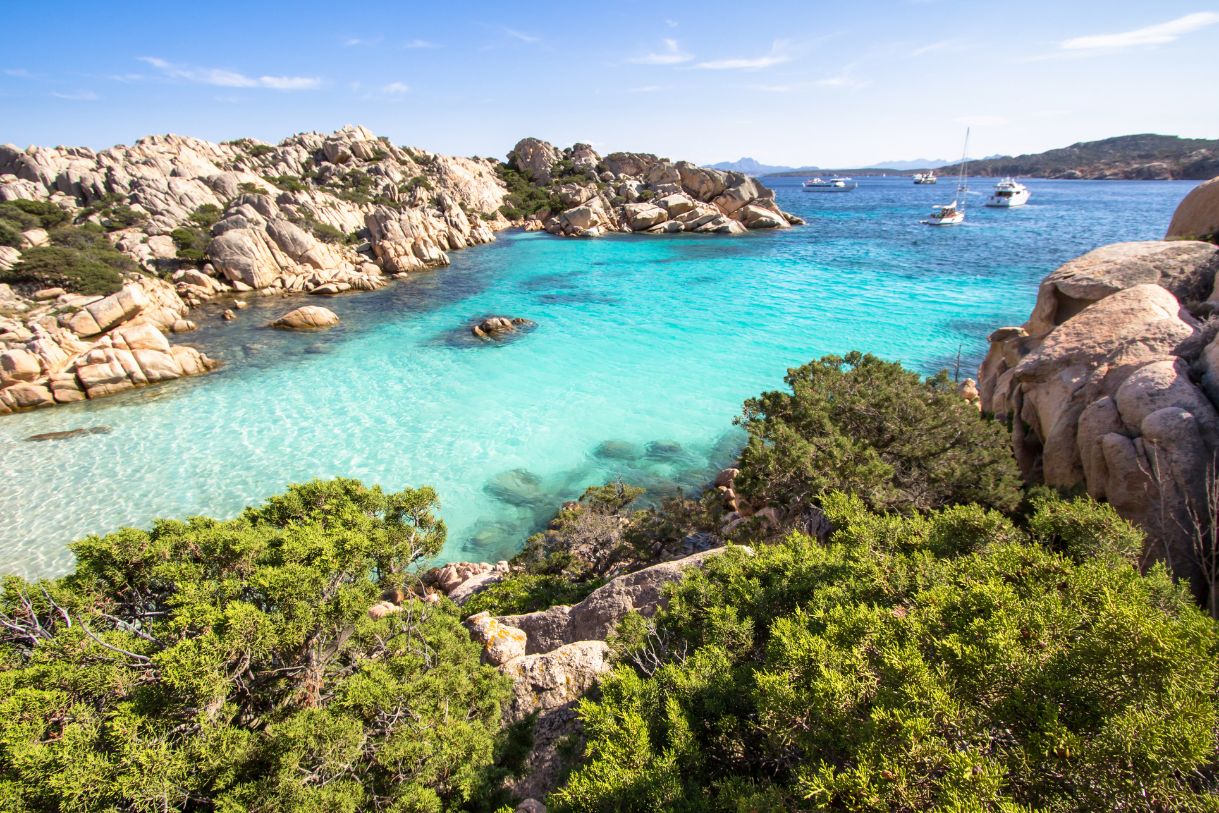These Are Some of the Best Sardinian Wineries to Visit in 2025
Following up on the overview we did on the stunning island wine region of Sardinia and our discussion about the wines of Sardinia, we naturally thought it best to create a travel guide and itinerary for visiting some of the best wineries in Sardinia.
Sardinian wine producers pride themselves on the production of local wines influenced by thousands of years of best practices handed down through generations. But they’re also not averse to implementing new technology and achieving a balance between tradition and new techniques. From exceptional red wine to local white varieties, these special Italian wines really do offer something for every palate. Not to mention the crystal-clear waters and beautiful beaches that serve as added bonuses and refreshment following wine tour and tasting experiences.
In this travel guide, we cover winery visits ranging from the north of the island to southern Sardinia. You’ll also learn about a variety of Sardinian wines to try that are available to enjoy at home. We highly recommend that you wet your palate before planning your winery visit to familiarize yourself with these special wines influenced by the Mediterranean sea.
- These Are Some of the Best Sardinian Wineries to Visit in 2025
- Best Wineries in Sardinia to Visit in 2025
- Main Wine Regions of Sardinia
- Travel Logistics
- Grape Varieties of Sardinia
- Sardinian Wines to Try at Home
- Historical Sites for Winetravelers in Sardinia
- Frequently Asked Questions about Wineries in Sardinia
Best Wineries in Sardinia to Visit in 2025
Sardus Pater Winery
Via della Rinascita, 46, 09017 Sant’Antioco SU, Italy
Located on the island of Sant’Antioco on the southwestern part of Sardinia, Sardus Pater (Father of the Sardinians) began production in 1955 but has been an established cooperative since 1949. Sardus Pater was the name of a Nuraghic god depicted on a coin minted in Sant’Antioco before the arrival of the Romans.
“In Roman times Pliny the Elder called Sant’Antioco “Aenosis Insula”, or the Island of Wine”, says winemaker, Francesco Bertagna. “This is a strong and ever-present link— it’s thought that the Phoenicians brought Carignano, the oldest and most typical of our vines.”
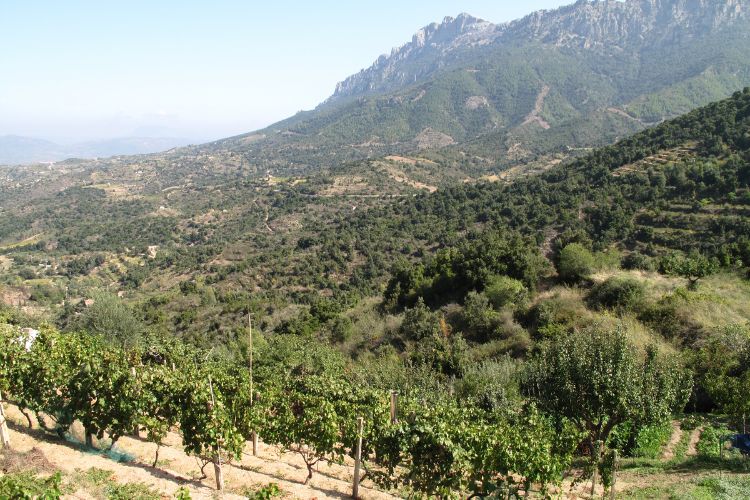
The sandy soil makes the vines resistant to phylloxera so when most vineyards around Europe were destroyed, the vines in Sant’Antioco were spared. Because of this, some vines are upwards of 150 years old! There are 140 members that tend to over 200 hectares (almost 500 acres) of which mostly Carignano (Carignan) is grown.
In 1994, they began production of wines from Vermentino grapes as well.
“We grow Vermentino (10 hectares), Monica (2 hectares), and a very low production of Moscato and Nasco that we use to make passito wines”, says Bertagna. “Last year we experimented with making a white vinified Carignano (1000 bottles) that had great success.”
Tastings: The winery currently has a small tasting room but will be expanding to offer a rooftop tasting experience soon.
Tenute Sella & Mosca
SP 42 dei Due Mari, 07041 Alghero SS, Italy
Founded by two men from Piedmont in 1899, today Sella & Mosca has over 550 hectares (1360 acres) under vine in the Alghero area of Sardinia. The landscape is stunning—set among what is known as Mediterranean scrub—oleander, maritime pine trees, palm trees, and eucalyptus overlooking the sea. These factors also contribute to the complexity of the wines, imparting herbal and saline qualities.
The winery produces Vermentino, Carignano (Carignan), Cannonau (Grenache), and Cabernet in a variety of styles. Most interestingly though, are the bottlings made with Torbato—a white variety now grown exclusively in northwest Sardinia. This once almost extinct grape was revived by Sella & Mosca and is used in a single varietal sparkling and still wines.
Experiences: The tasting room is open year-round and specialized tours are available as well. Options include trips around the estate, the historic winery, wine cellars, barrel room, historic museum and the vineyards. The museum visit includes explanations of the Anghelu Ruju Necropolis archaeological site found during excavations on the winery’s grounds! Does it get any better?
Cantina Audarya
KM 10+100, SS466 di, 09040 Serdiana SU, Italy
At the helm of this family-run venture are Nicoletta and Salvatore Pala, who have infused the winery with a vibrant blend of tradition and modernity when it comes to wine production. The name “Audarya” echoes nobility and purity, resonating well with the winery’s philosophy of crafting wines that are a genuine reflection of the region’s terroir, coupled with a touch of elegance.
Sprawling across 52 hectares, the vineyards of Cantina Audarya are a haven for native grape varieties such as Nuragus, Cannonau, Monica, and Vermentino. These varieties are meticulously cultivated to produce wines that encapsulate the distinctive characteristics of the Sardinian terroir. Their diverse wine portfolio offers something for every palate, ranging from refreshing whites to robust reds and delightful rosés.
#Winetravelers visiting the winery are treated to a range of exquisite tasting experiences, each offering a unique insight into the world of Audarya wines. Beyond the winery, the region of Serdiana offers a rich cultural experience. Visitors can enhance their trip with a visit to the historic Church of Santa Maria di Sibiola, a revered site dating back to the 13th century. The local cuisine is also a highlight, offering a delightful exploration of traditional Sardinian flavors. To book a tasting at Audarya, visit their website here, or contact the Audarya team at winetours@audarya.it. Let them know Winetraveler sent you and be sure to leave a review of your experience!
Cantina Mesa
Località Su Baroni, 09010 Sant’Anna Arresi SU, Italy
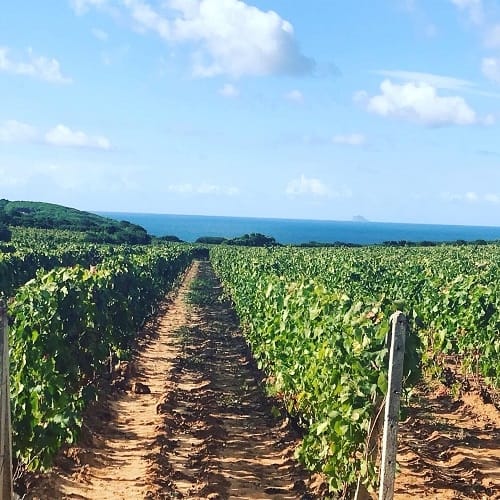
“Mesa” means table in both Sardinian and Spanish—the name was chosen to represent the nourishment of the Sardinian land to the wines produced. Cantina Mesa has a few vineyard plots in the Sulcis area, many of them are located in Sant’Anna Arresi—a valley surrounded by the sea with great cover from the mistral winds. More than 78 hectares (192 acres) are under vine, planted with 30 hectares of Vermentino, and 35 of Carignano. A mixture of alberello (bush training) and cordon trained vines are planted depending on the given terrain.
In 2017, Santa Margherita began to represent Cantina Mesa so you can expect to see more of these premium Sardinian wines in the U.S. soon.
Tastings: Within their wine shop is a tasting room to try their wines accompanied by a guided tasting.
Cantina di Santadi
Via Giacomo Tachis, 14, 09010 Santadi SU, Italy
Santadi, located in the Sulcis area (on the southwestern side of Sardinia) was established in 1960. The winery has over 600 hectares (1483 acres) of vines that (like many others in Sardinia) were not affected by phylloxera and therefore are ungrafted rootstock. These old vines offer a complexity that comes through in all three lines they produce.
Santadi makes a wide array of styles within their three lines: Grotta Rossa (entry-level), Rocca Rubia (Riserva), and Terre Brune (Superiore). The grape they work most with is Carignano but they also make many styles using Vermentino, Nuragus and Nasco.
Cantina di Calasetta
Via Roma, 134, 09011 Calasetta SU, Italy
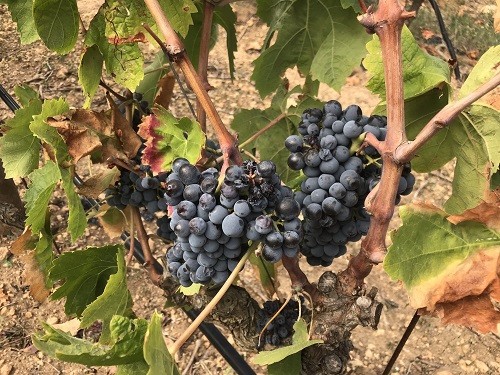
Founded in 1932, Cantina di Calasetta is the oldest winery in Sardinia. It is located on the Sant’Antioco island in the southwest of Sardinia. The ungrafted vines are bush-trained on sandy soils and are upwards of a hundred years old!
“The original roots are very deep and the plants are less vigorous and not very productive,” says winemaker, Fabio Vitillo. “This gives a higher concentration of polyphenolic and aromatic compounds.”
While the winery has been producing wine for decades, it used to deal mostly in bulk wine for other regions. However, after seeing the potential of the grapes grown, they switched gears and began bottling their own wine under the thoughtful guidance of Vitillo. The first estate bottling was in 2008.
“Being able to understand what the true potentials of each variety are, and study what are the vinification techniques that allow the grape variety to express itself at its best, always respecting the terroir,” says Vitillo. “Really getting to know the grapes you work with is a long process that takes years and a lot of research.”
Their 200 hectares (494 acres) are mostly grown with Carignan, and there is also a small percentage of Vermentino and Moscato. Vitillo’s philosophy is to make wines that show their origin.
“Once you have healthy and quality grapes, you can work on the wines as little as possible, preserving the characteristics of the vine and the terroir. I try to make the variety the protagonist by working the native vines without blending them with other varieties, using barrique only as a tool for micro-oxygenation and not as a ‘wine flavoring’.”
Argiolas Winery
Via Roma, 28/30, 09040 Serdiana CA, Italy
Argiolas is a family winery, now run by the third generation of the Argiolas family. The 250 hectares (618 acres) were first planted by Antonio Argiolas in 1906. The winery makes an array of styles using native grapes like Carignan, Nuragus, Nasco, Monica, Vermentino, and Grenache.
The winery is committed to sustainability saying, “we cultivate vines and produce wines with sustainable methods that respect the land. We use water and soil responsibly: we irrigate rationally, we minimize the use of chemicals, we use a pruning technique that prolongs the life of the strains. Thus we guard our land, its wealth of life, its nature.”
Experiences: They are also very involved in hospitality and loves to host guests. They offer wine tastings, tours of the winery, and cooking classes with local chefs teaching traditional dishes. The Argiolas Wine Bar at Cagliari Airport welcomes travelers right away. It’s also the perfect spot for a glass before leaving the majestic island.
U-Tabarka
Località Gioia, 09014 Carloforte SU, Italy
As if Sardina was not remote enough, U-Tabarka took it one step further and began cultivation on its own private island—S. Pietro. Its 7 hectares (17 acres) sit on volcanic soils in the Carloforte area of the island. It is the only winery on the island. Donned with a flamingo (a common sight on the island) on the label, they produce many styles from native grapes—Carignano, Bovale (Bovaleddu), Nasco, Moscato, and Vermentino. These are all aged in steel and glass, never oak.
All of the vines are ungrafted and the winery prefers minimal human intervention saying, “each vintage is the daughter of days of sun, wind, and rain that plants have lived. Each vintage is special, peculiar.”
Tastings: Vineyard tastings are available at this unique winery on the private island of S. Pietro.
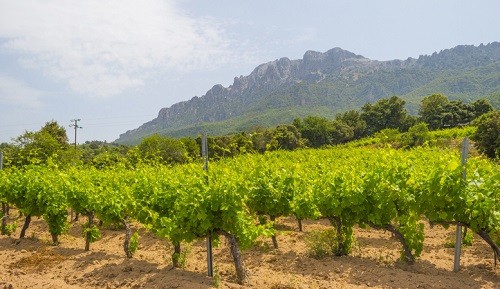
Dettori Winery
Strada Provinciale 29, 07036 Sennori SS, Italy
Nestled in the beautiful rolling hills of northern Sardinia, Dettori Winery is a family-run estate founded in 1977. Named after its founders, the Dettori family, the winery is dedicated to preserving the traditional Sardinian winemaking techniques passed down through generations.
At the heart of their production is the indigenous Cannonau grape, which thrives in the sun-soaked terroir of their 20-hectare vineyard. Aside from Cannonau, Dettori Winery also cultivates Vermentino, Moscato, and Pascale grapes, creating a diverse and exciting range of wines.
Winemaker and family member, Alessandro Dettori, takes pride in their sustainable, organic farming practices, which respect the land and its natural resources.
Tastings: Visitors to Dettori Winery can enjoy a guided tour of the vineyards, followed by a tasting experience in their rustic and welcoming cellar. Reservations are required.
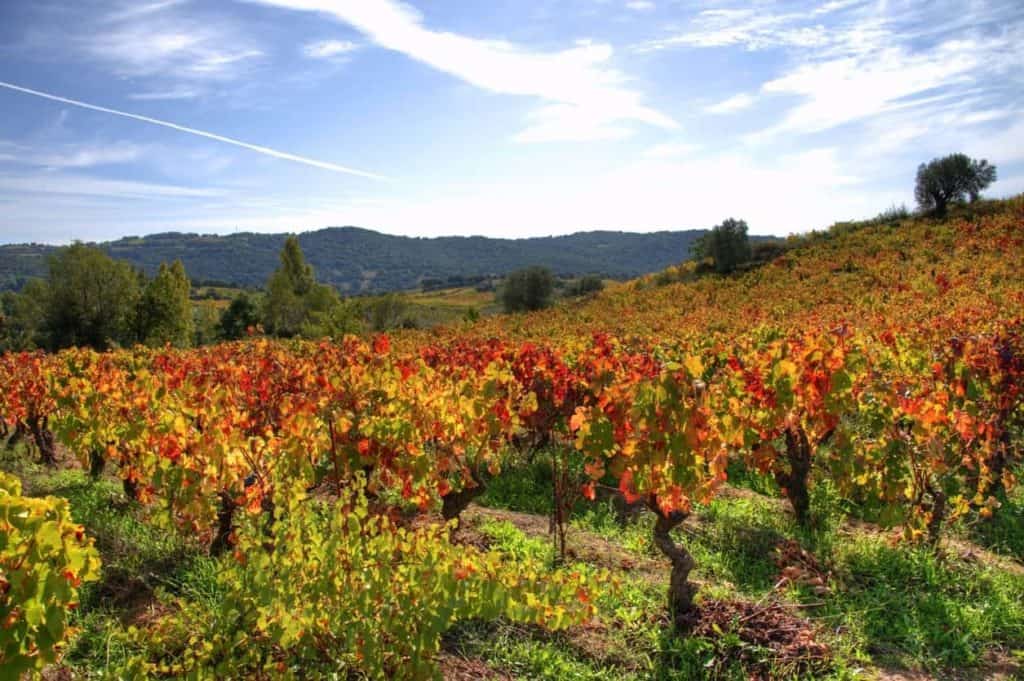
Tenuta San Mauro
Località San, Via Fraschea-San Mauro, 2, 14054 Castagnole delle Lanze AT, Italy
In the heart of Sardinia’s eastern coast, Tenuta San Mauro is a family-owned winery that has been producing exquisite wines since 1990. The estate’s 35 hectares of vineyards are cultivated with a passion for tradition and a commitment to quality, resulting in a range of wines that express the unique character of the region.
Tenuta San Mauro’s flagship grape is the native Vermentino, but the estate also grows Cannonau, Bovale, and Malvasia grapes. Winemaker, Alberto Pala, embraces modern techniques while maintaining a deep respect for Sardinian heritage, creating wines with a harmonious balance of innovation and tradition.
Wine Tastings: Tenuta San Mauro offers visitors the opportunity to immerse themselves in the winemaking process with a guided tour of the vineyards and cellar, followed by a tasting of their exquisite wines.
Pala Winery
Via Giuseppe Verdi, 7, 09040 Serdiana CA, Italy
Established in 1950 by Mario Pala, Pala Winery is a family-run estate located in the southern region of Sardinia. The winery has been passed down through three generations, each committed to producing exceptional wines that showcase the unique terroir of the island.
Spread across 50 hectares, Pala Winery cultivates a variety of indigenous grapes, including Vermentino, Cannonau, and Nuragus. Winemaker, Massimiliano Pala, is dedicated to creating wines that express the character of Sardinia, combining traditional methods with innovative techniques to produce wines of unparalleled quality.
Wine Tastings: The winery offers a comprehensive tasting experience, allowing visitors to explore the vineyards, learn about the winemaking process, and sample a selection of their exceptional wines. Advance reservations are recommended.
Main Wine Regions of Sardinia
Sardinia, Italy’s second-largest island, boasts a wine heritage that dates back more than 2,000 years, deeply influenced by its Mediterranean climate, diverse terrain, and historical ties with various cultures. The island’s wine regions are characterized by their robust indigenous grape varieties, each zone offering distinct flavors shaped by the terroir. With a viticultural mosaic that marries coastal influences and mountainous landscapes, Sardinia’s winemaking areas are as complex as they are historic.
Vermentino di Gallura DOCG
At the northeastern tip of Sardinia lies the Vermentino di Gallura DOCG, recognized for its premium quality Vermentino wines. These wines are celebrated for their bright acidity, fragrant bouquet, and a notable minerality attributed to the region’s granitic terrain. The coastal influence adds a saline note, making these wines exceptionally refreshing. Wine enthusiasts visiting Gallura are treated to a combination of sophisticated wine tasting experiences and the scenic beauty of the area, including the famed beaches of the Costa Smeralda.
Cannonau di Sardegna DOC
The Cannonau di Sardegna DOC, which is widespread across the island with a focus on the central to eastern parts, is devoted to the Cannonau grape, locally known as Grenache. The sun-drenched Sardinian climate nurtures these grapes, allowing them to develop into potent, age-worthy reds with pronounced berry flavors and a spicy edge. The region of Ogliastra stands out for its traditional approach to viticulture, offering a deep dive into the island’s winemaking customs alongside its dramatic landscapes.
Carignano del Sulcis DOC
The Carignano del Sulcis DOC occupies the southwestern region of Sardinia, where the Carignano vine thrives in sandy soils that contribute to the creation of deeply flavored, complex wines. These wines are often layered with ripe fruit notes and a subtle, earthy background, sometimes with a hint of the sea’s influence. The Sulcis peninsula’s vineyards are welcoming to visitors, who can explore the distinctive terroir and ancient surroundings of this lesser-known wine-producing area.
Malvasia di Bosa DOC
Along the west coast, the Malvasia di Bosa DOC is centered around the historic town of Bosa, specializing in wines made from the Malvasia grape. These can range in style from dry to richly sweet, with an aromatic profile that includes nutty, honeyed, and herbal notes. The area is known for its traditional oxidative aging methods, which impart a unique complexity to the wines. Bosa, with its vividly painted buildings and medieval heritage, provides an enchanting setting for wine exploration.
Alghero DOC
The Alghero DOC, in the northwest, is a hub of diversity, creating wines from a mix of native and international varieties. This region’s signature Torbato grape yields zesty white wines with a mineral-driven character. Alghero is also home to successful experiments with red and white grape varieties such as Cabernet Sauvignon and Merlot. The historic town of Alghero, with its rich cultural influences and fortified walls, serves as a cultural complement to the region’s wine offerings.
Monica di Sardegna DOC
The Monica di Sardegna DOC is known for Monica, a grape that produces accessible red and rosé wines, often characterized by a bouquet of ripe fruits and a light to medium body. These wines are typically consumed young and are prevalent in the regions around Cagliari and Oristano. For visitors, Monica wines serve as an excellent introduction to the island’s viticulture, pairing seamlessly with Sardinian gastronomy, especially the local cheeses.
Travel Logistics
Flying There
Technically part of Italy, Sardinia is an island in the Mediterranean that sits between Italy and Africa and offers a distinct experience that is uniquely Sardinian. It’s fairly easy to get to, though you’re flying from the US you’ll likely have to connect once in Europe. Rome offers the most domestic flights to Sardinia, though plenty of other major European airports offer short-haul flights. Be sure to peruse flight options with search sites like Kayak and snag deals as they arise.
Sardinia Vineyard Hotels
There are a couple of vineyard hotels, or “Agriturismos” on the island for Winetravelers who prefer to use a vineyard as a home base. Wine Resort Leda’ d’Ittiri is a cute Bnb-style hotel with impeccable service, upscale rooms and a relaxed vibe. If you’re feeling luxurious, your best bet is to stay on the stunning 5-star Grand Hotel Poltu Quatu property, which offers balconies with coastal marina views, upscale dining and wines sourced just down the road.
Sardinia Wine Tours
You can always rent a car once you arrive in Sardinia, but we always suggest using a local guide, or better yet, a local sommelier, to take you around the island. There are few more qualified than Alessandro with Culture Sardinia who can be your private guide on the island for the day.
For those traveling as a family, both kids and parents will enjoy the experience offered by Sardaigne en Liberté, which includes hiking and trails riding Sardinian donkeys, in addition to local wine tastings and other hidden gastronomic gems.
If either of the aforementioned experiences are sold out or unavailable, our local friend Franco is incredibly passionate about his island, and will happily pick you up from your hotel and will show you some of the best sights and flavors on the island from a local perspective. This particular tour leaves from the town of Cagliari.
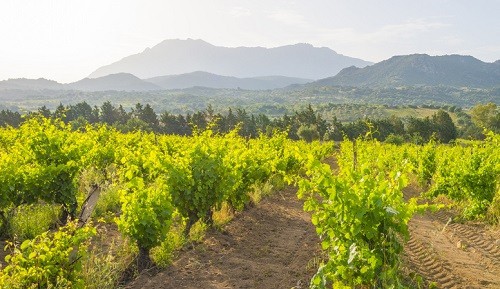
Grape Varieties of Sardinia
In Sardinia, the wine landscape is dominated by two main grape varieties: Vermentino for white and Cannonau for red. Vermentino thrives in the island’s hot, arid climate, yielding a white wine that reflects the island’s aromatic flora with a distinct saline finish. The Vermentino di Gallura DOCG, from the northeastern region, is particularly noted for producing wines that are intense and mineral-driven.
Cannonau, on the other hand, is the island’s principal red grape, akin to Grenache but with a Sardinian twist. It is known for producing wines that are rich yet fresh, with red berry flavors and a delicate elegance. Though there is no DOCG for Cannonau, there are recognized areas like Oliena and Jerzu that are known for distinctive expressions of this variety.
The Nuragus grape, with a heritage linked to the Phoenicians, is less known and mainly cultivated in the south under the Nuragus di Cagliari DOC. It creates a light-bodied, neutrally-flavored wine that is typically enjoyed young to maintain its freshness and is a traditional table wine in Sardinia. These varieties represent the essence of Sardinia’s viticulture, offering a sip of the island’s rich history and diverse terroir.
Vernaccia di Oristano is a unique and treasured white wine variety of Sardinia, believed to have been introduced by the Phoenicians. It is distinct from other Italian Vernaccias, with its name suggesting indigenous roots and a traditional aging process unique to the region. The wine is akin to sherry in its flavor profile, aromatic with notes reminiscent of Amontillado sherry, yet it is traditionally unfortified, a notable difference from its Spanish counterpart. It shares the sherry-like production technique of oxidative aging, facilitated by the flor yeast, which imparts complex nutty, savory, and umami qualities to the wine. Over time, Vernaccia di Oristano develops under a protective layer of yeast, in barrels partially filled to allow for oxidation, which concentrates its flavors and increases the alcohol and glycerol levels, leading to a richly aromatic and structured wine.
Sardinian Wines to Try at Home
Not headed to Sardinia any time soon and still want to open up a peppery and robust Carignano or an herbal and saline Vermentino? Here are some bottlings that are easy to find in the United States:
Sella & Mosca La Cala Vermentino di Sardegna
Sella & Mosca ‘Riserva’ Cannonau di Sardegna
Sella & Mosca Carignano del Sulcis Terre Rare Riserva
Sella & Mosca Vernaccia di Oristano
Sardus Pater Cannonau di Sardegna Foras
Sardus Pater Insula
Sardus Pater Is Solus Carignano Del Sulcis
Argiolas Rosato Serra Lori
Argiolas Vermentino di Sardegna Costamolino
Argiolas Perdera
Mesa Buio Buio Carignano Reserve
Cantina Mesa Giunco Vermentino
Santadi Carignano del Sulcis Riserva Rocca Rubia
Grotta Rossa Carignano del Sulcis
Santadi Vermentino di Sardegna Villa Solais
Cantina Calasetta Carignano Del Sucis Piedefranco
U Tabarka Giancu Vermentino di Sardegna
U Tabarka Roussou Carignano del Sulcis
Historical Sites for Winetravelers in Sardinia
Sardinia is much more than just a wine enthusiast’s paradise; it’s a land where history surfaces at every turn. The island is a chronicle of ancient cultures, each leaving behind a wealth of historic sites that now stand as open-air museums. These sites are perfect for #Winetravelers looking to delve into the past and experience the island’s history firsthand. The cultural heritage of Sardinia is evident in its historical landmarks, which range from prehistoric stone structures to remnants of medieval glory, offering a compelling diversion from the many vineyard trails.
Nuraghe Su Nuraxi
In the heart of Sardinia near Barumini, the UNESCO World Heritage site of Nuraghe Su Nuraxi is a remarkable example of the Nuragic civilization. These Bronze Age stone structures are unique to the island and represent one of the most extraordinary prehistoric architectures in the Mediterranean. The central tower, surrounded by a bastion with four corner towers, provides insights into the island’s early inhabitants.
Tharros
On the Sinis peninsula, the ancient city of Tharros offers a picturesque blend of history and natural beauty. Founded by the Phoenicians, this archaeological site later flourished under Roman rule. The remains include a temple, baths, and houses, all with a backdrop of the clear blue sea. Tharros is not only a trip into antiquity but also a place to enjoy stunning sunsets, making it a perfect late-afternoon excursion for those touring the nearby wineries of Oristano.
Anghelu Ruju Necropolis
Just a short drive from Alghero, the Anghelu Ruju Necropolis is one of the largest prehistoric burial sites in Sardinia. The underground tombs, carved into the limestone, date back to the Ozieri culture of the 4th millennium BC. #Winetravelers can explore the subterranean structures and admire ancient carvings and wall paintings.
Basilica of San Gavino
The Basilica of San Gavino in Porto Torres is a rare example of Romanesque architecture in Sardinia and is the largest Romanesque church on the island. Built in the 11th century, this basilica is famed for its two apses and underground crypt. Its proximity to the vineyards around Sassari makes it an accessible stop for those interested in the sacred architectural styles of the medieval period.
Castello di Acquafredda
Overlooking the town of Siliqua, the Castello di Acquafredda is a medieval fortress that once served as a strategic military post. The castle ruins, perched on a limestone hill, provide panoramic views of the surrounding countryside. The hike to the castle is invigorating, and the destination offers a serene spot for contemplation among the ruins and the natural beauty of Sardinia.
Cagliari’s Roman Amphitheatre
The Roman Amphitheatre in Cagliari, carved into the side of a hill in the 2nd century, is one of the most important Roman ruins on the island. Once the scene of gladiatorial battles, it now serves as a venue for concerts and events. A visit here can be combined with a tour of the nearby vineyards in the Cagliari region, offering an afternoon of cultural and historical enrichment.
The National Archaeological Museum
For a comprehensive overview of Sardinia’s history, a visit to the National Archaeological Museum in Cagliari is a must. Housing artifacts from the Nuragic, Phoenician, Punic, and Roman periods, it provides context to the historical sites visited around the island. Its central location makes it a practical and enriching stop for those staying in or passing through Cagliari.
The Giants of Mont’e Prama
In Cabras, the Giants of Mont’e Prama are enigmatic stone sculptures created by the Nuragic civilization, which represent some of the oldest large statues in the Mediterranean, predating even classical Greek statuary. The figures, some of which are over 2 meters tall, are displayed in the Civic Museum of Cabras and are a testament to the artistry and craftsmanship of ancient Sardinians.
The Medieval Castle of Bosa
The Castle of Malaspina in Bosa, dating back to the 12th century, is nestled atop a hill that offers breathtaking views of the town and the river Temo. Visitors can explore the remains of the castle and its fortifications, and the nearby wine region is known for its Malvasia di Bosa, making this site a perfect marriage of oenological and historical pursuits.
The Altar of Monte d’Accoddi
The prehistoric Altar of Monte d’Accoddi near Sassari is a unique ziggurat-like structure dating back to the 4th millennium BC. This raised platform, which is thought to have had a religious or ceremonial purpose, is one of a kind in Europe, echoing the architectural styles of ancient Mesopotamia. Its significance and function are still shrouded in mystery, inviting travelers to ponder the ancient world of Sardinia.
Frequently Asked Questions about Wineries in Sardinia
You are reading “Best Wineries and Wine Tasting Experiences in Sardinia” Back To Top
wineries near me, Sardinian wineries, wine tasting in Sardinia, Italian wine routes: trending travel destinations in Italy
If you enjoyed this guide, make sure you register to become a Winetraveler for free! You’ll get access to all of our content and interact with other Winetravelers and for travel inspiration around the world. Be sure to follow along with us on Twitter and Instagram as we continue to feature more exciting destinations.
